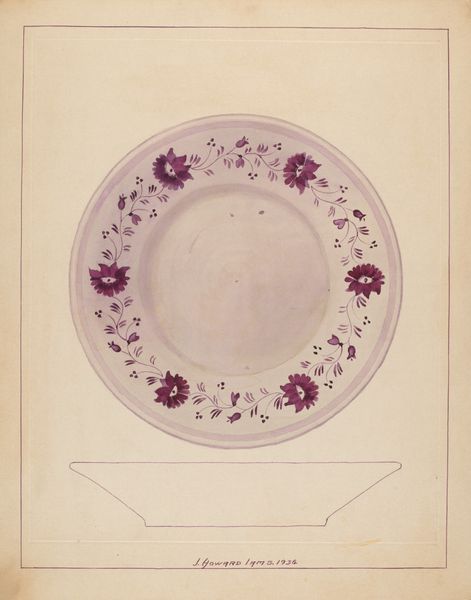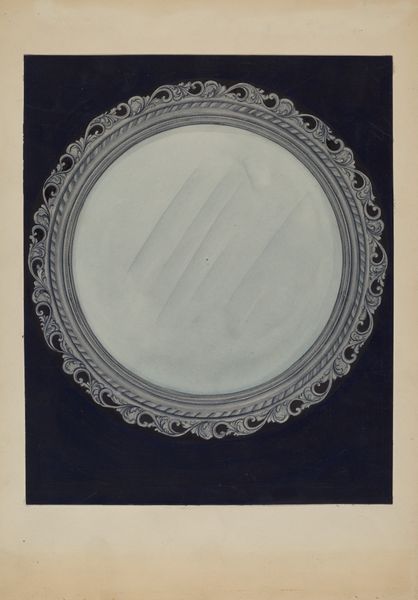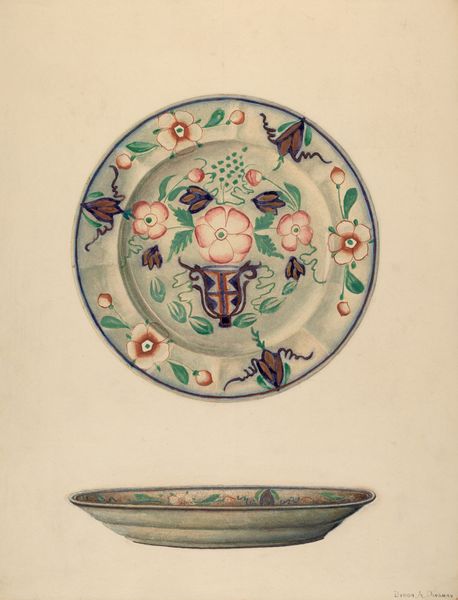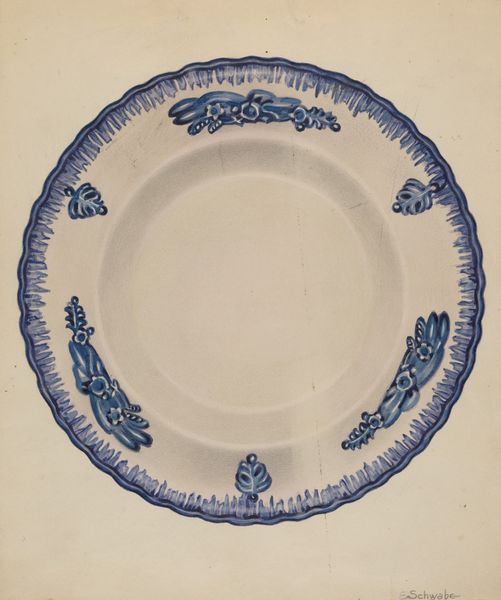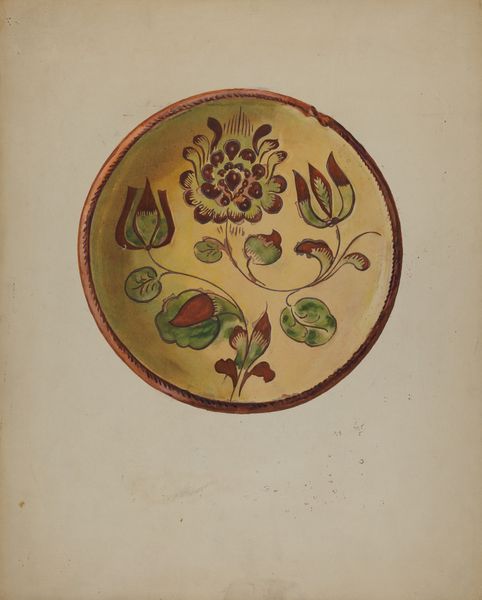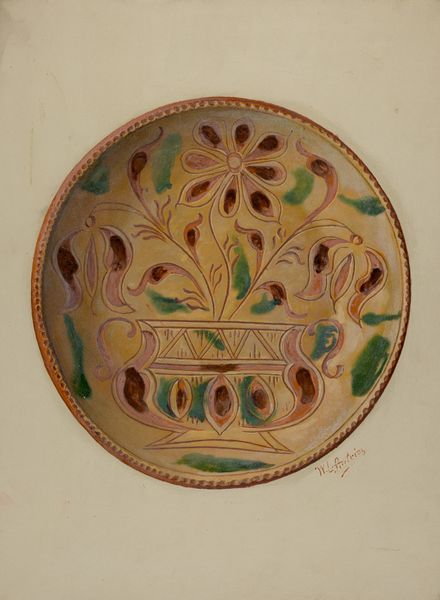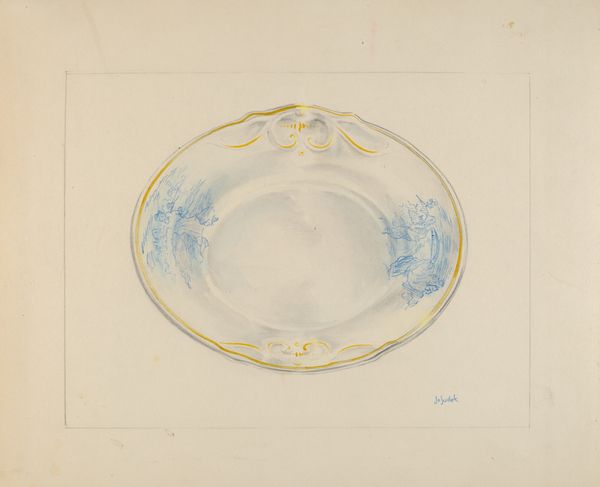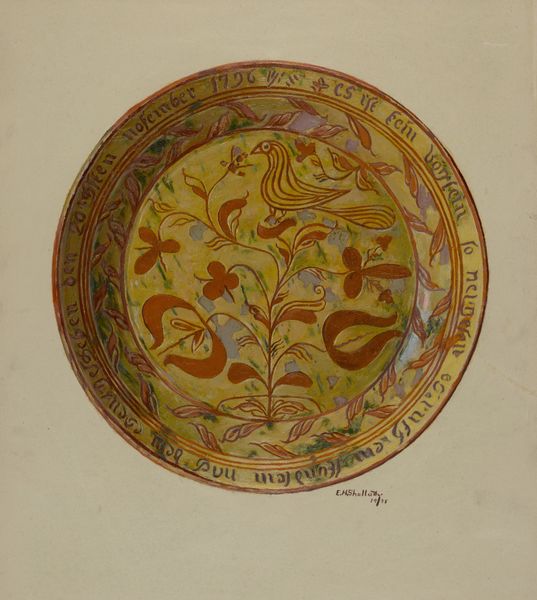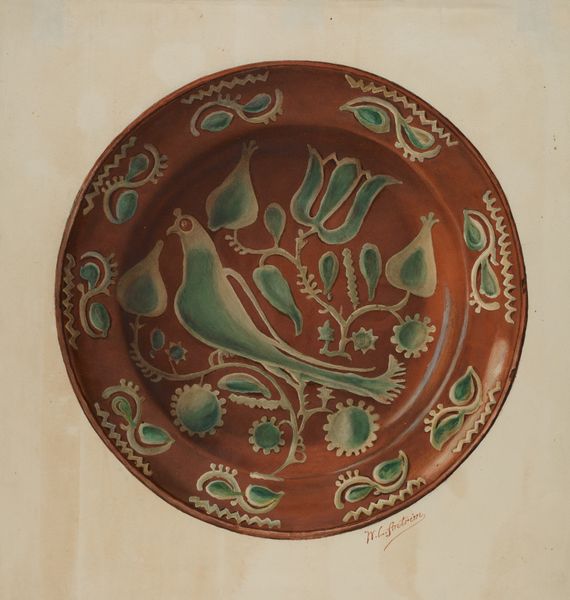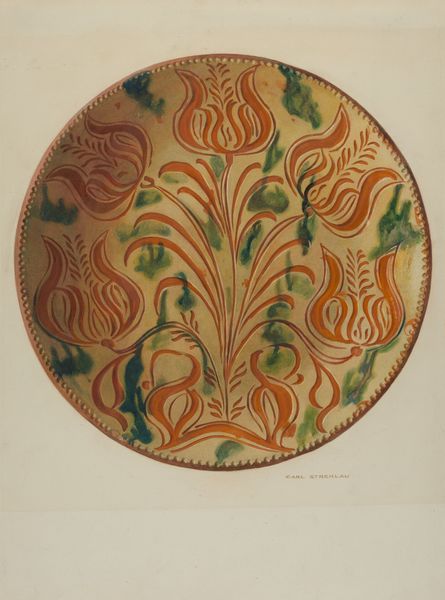
drawing, watercolor
#
drawing
#
water colours
#
watercolor
#
modernism
#
watercolor
Dimensions: overall: 35.4 x 27.9 cm (13 15/16 x 11 in.) Original IAD Object: 1 1/4" High 9" Dia
Copyright: National Gallery of Art: CC0 1.0
Editor: This watercolor drawing, simply titled "Plate" by J. Howard Iams in 1936, is unexpectedly striking. The color palette is very cool and appealing, even though the subject matter seems... well, mundane. What do you see when you look at this drawing? Curator: I'm intrigued by the very deliberate act of representing a manufactured object with a handcrafted medium. Here we have watercolor, traditionally associated with fine art, used to depict a mass-producible item, a plate. This begs the question: what is Iams suggesting about the boundaries between art and craft, and perhaps even more broadly, the distinctions within the economic structure that allowed both mass-production and artistic work to coexist? Editor: So, you are less concerned with the aesthetic value than with the socioeconomic background implied in the art. Can you elaborate? Curator: Precisely! Consider the materiality of the plate itself - most likely ceramic, made through industrial processes involving kilns, labor, and transportation. Then, we observe Iams’ intervention – the handmade quality of the watercolor rendering, calling our attention to the act of creation, labor, and choice. This act elevates and comments on mass-produced item in itself. What does the subject of the piece tell us about production processes or maybe consumption at the time? Editor: Hmm, it's easy to overlook the amount of labor that produces something seemingly so simple. Do you think there's a deeper meaning here beyond the statement about art and commerce? Curator: Absolutely! I think there’s room to see how a renewed vision around how objects come into existence also has something important to teach us in current day in our relation with commercial processes, labor practices, our access and understanding of materiality. Editor: This has definitely changed how I see the piece, moving beyond the pleasing design. It highlights the production that makes art objects as we think about consumer objects. Curator: Agreed, I’m grateful for this perspective. Now every plate I see from now on has some renewed life!
Comments
No comments
Be the first to comment and join the conversation on the ultimate creative platform.
